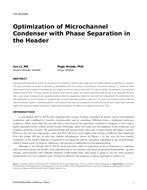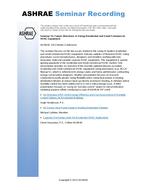Emphasis is placed upon the integration of chilled ceiling/ ceiling radiant cooling panel technology with other building mechanical systems in this paper. Applicable radiative and convective heat transfer equations are applied to illustrate the rates of heat removal that are representative of this technology. Also explored are the comfort advantages of radiant cooling and space design dry-bulb temperature criteria. The issue of potential steady state and transient condensation on the exposed 55-60°F (12.8-15.6°C) panel and supply piping surfaces is analyzed. Also explored, in light of ASHRAE standards 62 [IAQ] and 90.1 [energy], are dedicated outdoor air preconditioning requirements that enable decoupling of the space sensible and latent loads, thus eliminating both condensation and capacity concerns. Finally, the economic issues related to the first and operating cost of the integrated system compared to conventional all-air VAV systems are explored. It is a recognized fact that building investment decisions are based almost entirely on first cost in the United States, and if this technology is to blossom in that marketplace, victory over first costs must be achieved. The paper concludes that technical and economic barriers do not currently exist to inhibit the widespread application of ceiling radiant cooling panels when integrated with dedicated outdoor air systems.
Units: Dual
Citation: ASHRAE Transactions, vol. 108, pt. 2
Product Details
- Published:
- 2002
- Number of Pages:
- 12
- File Size:
- 1 file , 1.5 MB
- Product Code(s):
- D-8850


